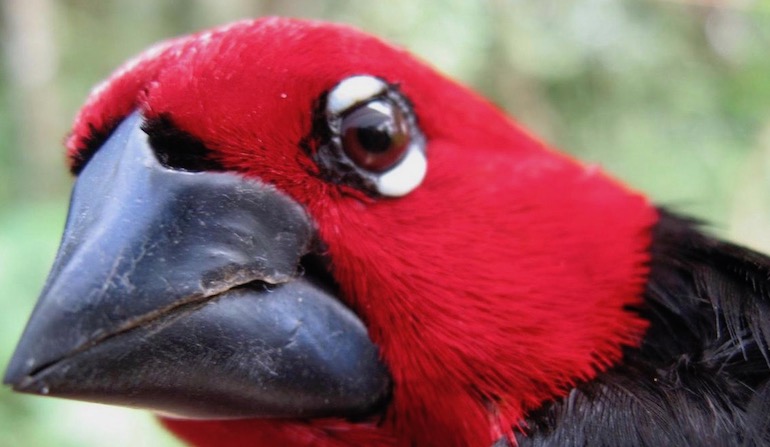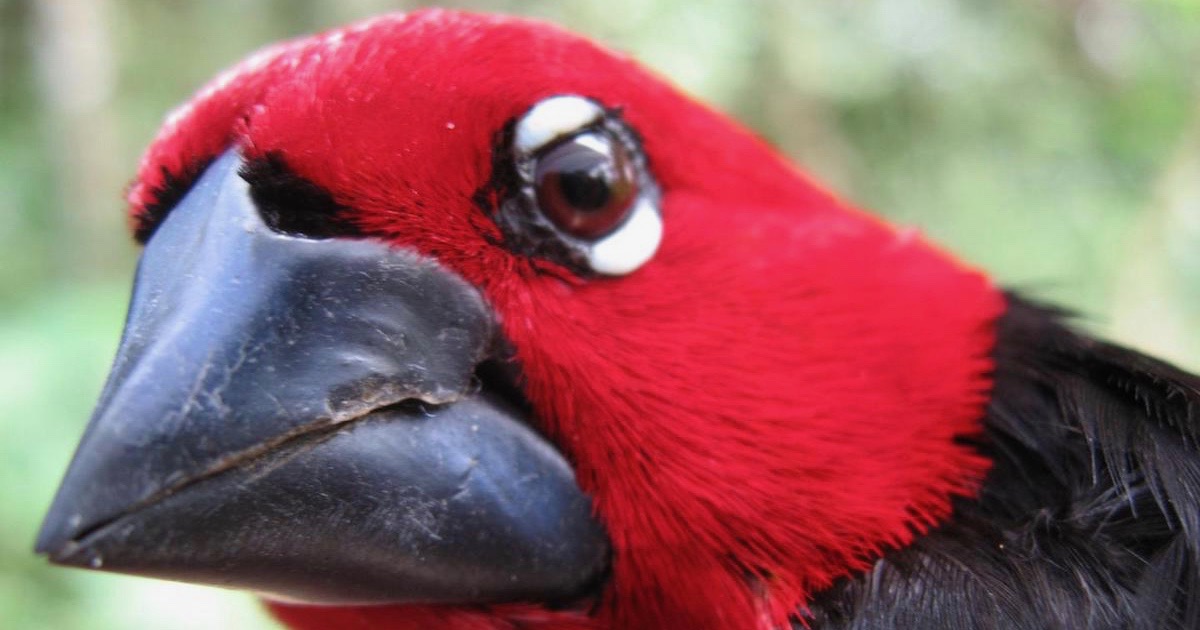 Evolution
Evolution
 Intelligent Design
Intelligent Design
Encore Performances in the Design of Life


The stars of Illustra Media’s “Design of Life“ films continue performing on the stage of science with new tricks, confounding evolution as they go. An ID roundup:
Bird News
The Arctic tern featured in Flight: The Genius of Birds is a fairly hefty bird weighing in at 86 to 127 grams. The smaller the bird, the more limited its capacity for long-distance flight. Scientists at Lund University in Sweden were surprised, therefore, to check the loggers they put onto the backs of willow warblers, which weigh in at only 10 grams. These champs flew at least 13,000 km, wearing out the batteries on their data loggers!
“I think it’s fascinating — they are so small and migrate at least 13,000 kilometres one way. There are no other studies that show that birds of that size can migrate that far. Even more impressive perhaps is that they make the journey alone in their first year of life”, says Susanne Åkesson. [Emphasis added.]
While we’re on the bird line, let’s consider another finch-beak story about evolution. These finches are “black-bellied seedcrackers” that live in Cameroon. News from Princeton University discusses the work of Tom Smith and Bridgett vonHoldt, who have solved a “long-standing finch beak mystery.” Why are some of their beaks small, and others larger? The answer turned out to be Mendelian, not Darwinian. The females didn’t seem to have any preference for one size over the other, so sexual selection was out. Smith’s observations showed the population “perfectly matching the 3:1 pattern predicted by Gregor Mendel centuries ago.” Then vonHoldt found the actual dominant gene. This growth-factor gene causes smaller beaks in those individuals with two recessive alleles. Although the story is claimed to be “quite similar to that of Darwin’s finches,” evolution does not seem to have played any role in the explanation. “That Mendelian pattern was the key,” vonHoldt said.
Whale News
Remember those loud, geyser-like fountains coming from the blowholes of humpback whales shown in Living Waters? Believe it or not, they have been seen from space. Nature reports that the WorldView-3 satellite, launched in 2014, witnessed the exhalations of whales:
Body shape and even the size of the creatures’ flippers and tail fins were visible in some photos, as were whale faeces and spray from the animals’ blowholes. The team found that grey whales and fin whales appear paler in colour than the water, making it easier to confidently identify them than the other species.
This calls attention to the massive size of these creatures that supposedly evolved from a small four-footed land animal. Richard Sternberg emphasized in the film what an impossible undertaking that would be for evolution, genetically speaking.
Humpbacks have also been seen in greater numbers in the Mediterranean Sea over the last 150 years, says Science Daily from research at the University of Seville. They probably migrated there from the North Atlantic. Scientists can’t find any explanation for the uptick other than the search for food, so maybe this pod of humpbacks is fancying the Mediterranean diet.
Dolphin News
Dolphin echolocation received more study by Aarhus University. Science Daily tells about their research into the physics of the sound beams emitted by toothed whales. The article tries to put a Darwinian spin on the origin of biosonar, but the research actually showed good design. All toothed whales, from dolphins to sperm whales, use narrow sound beams of high intensity for their hunting. That makes sense design-wise:
“This is really similar to how our own vision works — we see best in just a narrow field of view which we turn towards whatever we want to look at” says Dr. Mark Johnson from University of St. Andrews, a co-author of the study, and adds: “these narrow sonar beams may help animals make sense of complex environments with lots of echoes.” Using a narrow sonar beam has other advantages as well. “focusing the sound energy in one direction also helps increase the range at which prey can be detected and thus could lead directly to higher foraging rates — provided the beam doesn’t get too narrow!” adds Jensen.
The proof of design is in the result: “Far from being inefficient, this highly focused sense may have helped them succeed as top predators in the world’s oceans.” The Darwinspeak in the article merely asserts evolution without explanation. Details of the new findings about sonar beams can be found in Current Biology, “Narrow Acoustic Field of View Drives Frequency Scaling in Toothed Whale Biosonar” by Jensen et al, where the authors present a curious mix of design words and evolution words, with design doing the heavy lifting:
We instead propose that a narrow acoustic field of view, analogous to the fovea of many visual predators, is the primary evolutionary driver of biosonar frequency in toothed whales, serving as a spatial filter to reduce clutter levels and facilitate long-range prey detection.
Incidentally, Science Daily reported separately that members of the Acoustical Society of America are holding a contest to see whether bats or dolphins have the best echolocation systems. The distinction is academic, because “despite nearly a century of development, these [man-made] active sensing technologies still fail to replicate the performance of sonars (sound waves) used in the biological world by dolphins and bats for echolocation.”
Salmon News
Do salmon moved to an unfamiliar location lose their ability to navigate by the earth’s magnetic field? Apparently not. A paper in the Proceedings of the National Academy of Sciences finds that non-migrating Atlantic salmon haven’t lost their magnetic sense.
Despite having no recent history of ocean migration and being translocated from Maine to Oregon approximately 60 years ago, juveniles exposed to magnetic fields characteristic of the North Pacific displayed adaptive orientation responses similar to those of anadromous [ocean-migrating] Pacific salmonids….
These findings indicate that use of map information from the geomagnetic field is a shared ancestral character in the family Salmonidae and is not restricted to populations with anadromous life histories.
It’s easier to lose a complex system than to create it, as Michael Behe shows in his upcoming book Darwin Devolves. The paper doesn’t explain how evolution created the salmon’s built-in magnetic mapping sense. They just know that it gives the fish the ability to explore novel environments even if they don’t need to use it, as in the Atlantic population.
Butterfly News
Fans of the Metamorphosis film will be glad to see intelligent design in an article on New Scientist — sort of. The “secrets of butterfly wing patterns” have been revealed at George Washington University by “gene hacking,” the article says. (Hacking requires ID, right?) Using CRISPR/Cas9 techniques to modify the genes for wing scales, researchers studied “the role of the WntA gene in creating one of nature’s greatest artworks, the butterfly wing.”
By removing the gene from seven butterfly species, they were able to radically alter the insect’s appearance. Wing patterns and colours changed in ways that were unexpected.
The research showed how WntA acted as a master gene responsible for the trademark look of different butterflies.
It’s easier to remove a gene than create one. The researchers say they “know why” butterflies evolved wing patterns: sexual selection, finding a mate, or “some kind of adaptation” for protection.
“What is more mysterious is how do they do it. How do you make stripes and dots, how do you make complexity, how do you fine-tune a given feature during long evolutionary time scales?”
And yet everywhere they look, they see patterns and purposes, not the work of blind chance. Wouldn’t design be a better way to look at this phenomenon?
Martin added: “Our research is very fundamental, and it’s about trying to understand where we come from and how. In a way, a butterfly wing starts as a blank canvas where patches of cells develop for a specific purpose, and we have that in our own anatomy. If you look at the brain, to make very complicated brains you’ve got to make patterns. We don’t really know how all these patterns develop. That’s where butterflies come in.”
It is regrettable to end on a sad note, but the Monarch butterflies, stars of the Illustra film, suffered another sharp decline from a big 2016 winter storm. The Entomological Society of America reported via Science Daily:
A much greater number of monarch butterflies perished in a snowstorm in March 2016 in Mexico than previously estimated, according to new research. Analysis of damage from the storm — and the ensuing salvage logging — sheds further light on the precarious state of the famed butterflies’ overwintering colonies.
The hardy one-gram long-distance migrators must have gone through other storms before their feat was discovered by man, so we can only hope for the best that they will recuperate. But another Science Daily article worries that Florida’s populations of Monarch butterflies have declined 80 percent since 2005, probably due to man’s use of glyphosphate for killing crop weeds. This weed killer helps farmers, but decimates the milkweed that the butterflies depend on. Once again, you can understand how it’s easier to lose a design than to “evolve” it.
Photo credit: A black-bellied seedcracker, by Dr. Tom Smith, UCLA, via EurekAlert!.

